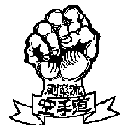
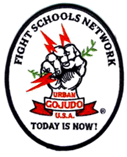
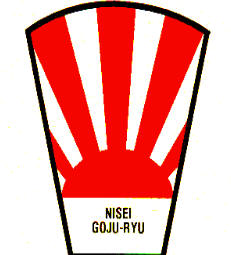
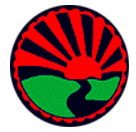
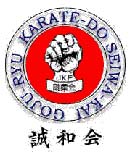
|
|
 |
 |

|
|

 The list of Goju Ryu Karate-Do is a long one and continues to grow. From the list there are Japanese Goju-Ryu, Okinawa Goju-Ryu, Jundokan Goju, Meibu-kan Goju, Shodokan Goju Ryu, Shobukan Goju, Shikokan Goju, Seiwa-Kai Goju Ryu, Goju-Shorin, Goju-Kai USA, Shorei-Goju, Yuishinkan Goju Ryu, USA Goju, Nisei Goju Ryu, Tenshi Goju, Kazen Goju Ryu, Chinese American Goju, African Goju, and Chinese Goju, this is our art.
The list of Goju Ryu Karate-Do is a long one and continues to grow. From the list there are Japanese Goju-Ryu, Okinawa Goju-Ryu, Jundokan Goju, Meibu-kan Goju, Shodokan Goju Ryu, Shobukan Goju, Shikokan Goju, Seiwa-Kai Goju Ryu, Goju-Shorin, Goju-Kai USA, Shorei-Goju, Yuishinkan Goju Ryu, USA Goju, Nisei Goju Ryu, Tenshi Goju, Kazen Goju Ryu, Chinese American Goju, African Goju, and Chinese Goju, this is our art.
Although Goju-Ryu Karate is a popular martial arts style, taught all over the world, there are very few books on the subject. Goju Ryu Karate displays the oldest martial arts traditions with a history that can be traced back more at least a thousand years. Keeping the primitive traditional forms of martial arts yet full of fighting spirit. The system is based on a concept that all hard and rigid is not good, however all soft and gentleness can be equally harmful. The two should complement each other.This combination of the two gives Goju Ryu its beauty, disciplined movements, circular flow and graceful form. But lest anyone believe that Goju is merely a beautiful style of the dance with little of the art of defense, he need only watch two Goju students spar against one another. Goju Ryu has received the most Chinese influence of all of the Japanese styles of karate followed closely by Shorin Ryu and Shito Ryu. With the 'Go' (hard or positive) and the 'Ju'(soft or negative) in consistent harmony, one equalizing the other as with the rest of the universe. Through Goju Ryu training a simple act like blocking or striking will eventually occur naturally,a side effect of a pure of thought and mind and repetition. There are many primary characteristics of Japanese Goju Ryu:
During the 14th century Kempo is introduced into Okinawa. It wins popularity and is trained as an art of self-defense, under the name of 'tote'(= Chinese hand). At Okinawa the native fighting art 'te' was practiced long before the introduction of Kempo. It is believed that 'te' was combined with 'Kempo' by the Okinawans and developed to the martial art Karate.
The ban on carrying weapons on Okinawa was first decreed in 1477 by king Sho Shin. The weapons ban was still in place when Japan invaded Okinawa in 1609, but the Japanese also decided to ban the practice of martial arts. Consequently, the Okinawans had to continue with their martial arts training in secrecy.
During the next three centuries the martial art developed into its own character and became known as 'Okinawa-te'. This Okinawan art then split or divided into three main styles:
| Shuri-te | influenced by the hard techniques of Kempo and characterized by an offensive attitude. |
| Naha-te | influenced by the softer techniques of Kempo including breath control and 'Ki'. It was characterized by a more defensive attitude with grappling, throws and locking techniques. |
| Tamari-te | influenced by both the hard and soft techniques of Kempo. |
By the end of the 19th century Shuri-te and Tomari-te were subsumed under the name Shorin Ryu, which during the years has developed into several slightly different styles. Naha-te becomes known under the name Goju Ryu (the hard and soft style) and has remained basically unified.
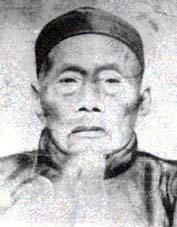 Ryu Ryu Ko, (also known as Xie Zhong Xiang) - July 1852 - February 1930. Ryu Ryu Ko was born in Chang-le, Fujian. In his early years, he followed in the footsteps of "Pan Yuba" to study Ming He Quan. He was a first generation master (Shi) of Whooping Crane Boxing.The founder of Whooping Crane (sometimes mistaken with its counterpart 'Feeding Crane' another Crane style Gung Fu which emphasizes aggressive and offensive techniques). In 1866, Ryu Ko formally started teaching his form of Te. In 1883, he set up a martial arts center and started to receive students and pass on his style of Wushu. His Chinese boxing style Quan Fa had its own special and unique characteristics.
Ryu Ryu Ko, (also known as Xie Zhong Xiang) - July 1852 - February 1930. Ryu Ryu Ko was born in Chang-le, Fujian. In his early years, he followed in the footsteps of "Pan Yuba" to study Ming He Quan. He was a first generation master (Shi) of Whooping Crane Boxing.The founder of Whooping Crane (sometimes mistaken with its counterpart 'Feeding Crane' another Crane style Gung Fu which emphasizes aggressive and offensive techniques). In 1866, Ryu Ko formally started teaching his form of Te. In 1883, he set up a martial arts center and started to receive students and pass on his style of Wushu. His Chinese boxing style Quan Fa had its own special and unique characteristics.
Whooping Crane closely resembles Goju Ryu and definitely plays an important role in many Okinawan as well as Goju Ryu Kata. This resemblance can be seen particularly in Suparunpei, Kururunfa, Saifa, etc.;those Kata brought back to Okinawa from China each demonstrate specific movements from White Crane. Many scholars use this similarity in the kata to trace the line of history of Goju Ryu, which is still somewhat confusing due to the destruction of written materials during the Second World War. Ryu Ko is given credit for being Kanryo Higashionna's main teacher as well as teacher to other well known turn-of-the-century Okinawan masters.
Kanryo Higashionna, (also spelled Higaonna) - March 10, 1851 - December 23, 1915. A leading nineteenth century Karate master, combined the techniques of Naha-te and the teachings of Shuri-Te plus added different moves from the Chinese art, ShaoLin Chuan to create a new art. He was regarded as the highest authority and foremost masters of Naha-Te as well as Okinawan Karate and regarded as one of the most influential Karate instructors in Okinawan history. Higashionna was a student of Ryu Ryu Ko.
In 1866, at the age of 15 or 16 he sailed from Okinawa to further his studies abroad in Fuzchou China in the arts of Chinese Kempo with Sifu Liu Liu Gung and remained there for 10 to 15 years. It is believed that Higashionna Sensei studied the styles of Hung Gar-Shaolin Chuan, hard style Chinese martial arts of Chi-Chiand/or I-Chi with another Chinese master only known as 'Woo'.He returned to Okinawa during the middle of the Meiji era (1868-1911) and introduced many new effective hand and kicking techniques, distinguished from other styles by its integration of Go- no (hard) and Ju-no (soft) Kempo into one system. His fame as a martial artist quickly spread and the Okinawans soon realized that the martial art of Higaonna Sensei exceeded anything they've seen before. Higashionna Sensei opened his house as a dojo and continued to teach until his death in 1915 in Naha Okinawa.
Much credit is given to Kanryo Higashioanna for the development of Okinawan Karate-do and today he is honored as the founder. Arguably, however, it was through Miyagi Chojun, the founder of Goju Ryu,that Higashiaonna's name and efforts became so entrenched in the history of modern Karate-do. Chojun Miyagi became one of Kanryo Higashionna's greatest disciples and he succeeded him after his death in 1915 at the age of 63 years old.
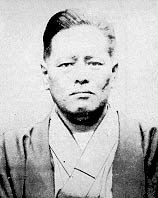 Chojun Miyagi -April 25, 1888 - October 8, 1953.
Chojun Miyagi -April 25, 1888 - October 8, 1953.
Chojun Miyagi was born in Higashi-Machi (Naha-shi) Okinawa of a wealthy family who's business was import/export. Originally Miyagi Chojun was born as Miyagi Matsu however his name was changed to Chojun at the age of 5 by his uncle whom adopted him after the death of his father in 1893. His family owned two ships which made regular trips to mainland China, placing them among the wealthiest families in the area and enabled a young Miyagi Chojun Sensei to travel to China to study the style of his instructor and develop the style of Karate we call Goju Ryu today. However his original Martial Arts training started with his neighbor Ryu Ko Aragaki (one ofthe very few fighters ever to beat the legendary Choki Motobu) at 11 years old. Ryu Ko Aragaki Sensei, before moving his family to Taiwan, later introduced him to Kanryo Higashionna, and he began training at the age of 17 in the fall of 1905 after fulfilling a host of chores for his new sensei (the traditional way of being accepted by an instructor).
Because of his outstanding ability and incredible determination, he progressed very quickly. The training he received was rigorous beyond belief but he practiced ever harder with an enthusiasm unmatched by any of the other students. Chojun Miyagi became "uchi deshi"(private disciple) of Kanryo Higaonna. Chojun Miyagi, as successor to Naha-te pushed himself to the limits of ability in his desire to emulate the extraordinary skill of his teacher.
After training approximately 15 years with Higaonna Sensei Miyagi made his first trip to China to study Chuguko Kempo (Chinese Fist)in Fouchow, Fukien Province, from 1915 to 1917. Miyagi made many trips to China during his lifetime in order to futher his knowledge of the martial arts. During his travels in China he studied not only the building blocks of his teachers art Hung Gar-Shaolin Chuan Chi-Chi, but also I-Chuan, Pa Kua Chang and Tai Chi Chuan.It was at this time he learned the form (kata) Rokkishu which later became the foundation for the Kata he would later create called "Tensho".
He returned to Okinawa in 1915 due to the sudden death of Higaonna Sensei. Miyagi Chojun Sensei arranged for Higaonna's funeral and paid all expenses. A short time later Chojun Miyagi decided to return to China in search of Higaonna's teacher but was unableto find him or his dojo.
Upon his return to Okinawa Miyagi began to teach from his home where he turned the garden into a dojo. Later, he also taught at theOkinawan Prefecture Police Training Center, at the Okinawan Master's Training College, and at the Naha Commercial High School (wherehis teacher had once taught). However, his private teaching at his home remained strictly in adherence to the principles and traditions of the teacher, Kanryo Higashionna. Blending the strong snap techniques of the Okinawan style and the dynamic and free techniques of the soft Chinese Kempo, his style was complete.With his extensive martial art training in Okinawa-te, Naha-Te and the hard-soft arts he learned in China, Miyagi Sensei developed a refined form of empty hand self-defense. He also organized the additional movements to strengthen the body through dynamic tension,exercise, and calisthenics.
He began to teach his new style of Karate to a large number of people in and around Naha, and to lecture and demonstrate throughout Japan Miyagi-Sensei subjected the art of Naha-te, as received from Kanryo Higashionna, to scientific examination. He mastered the basic Go (Sanchin) and the six rules and created the Ju form (Tensho), combining soft and hard movements.The principals of Naha-Te and the hard and soft styles of Chinese martial arts became the basis of the Miyagi school of Karate.
In 1929 one of Chojun Miyagi Sensei disciples, Jinan Shinzato, was in mainland Kyoto, Japan for a large martial arts convention to demonstrate Naha-te. After the performance he was asked to what school of karate he belonged. He was unable to answer the question, since 'Naha-te' was not the name of a style. At his return he told Miyagi Sensei about the occurrence, who thought about theproblem and decided that it should be advantageous to have a name for his martial art in order to promote and spread his system. He chose the name "Goju Ryu" (the hard-soft style), inspired by the "Eight precepts" of Kempo, written in the Bubishi. Quoting from the third verse of a Chinese Bubishi poem, Eight Poems of the Fist: "The way of inhaling and exhaling is hardness and softness." It is from this that the art Miyagi studied and taught got its name. Goju-Ryu, the way of hard and soft.
Indeed, the term Goju means hard-soft. Go is the Japanese word for hardness and Ju is the word for softness. Go-Ju are also the numbers "5 and 10", which could be interpreted as half and half (half hard and half soft). Aftermany years of studying, teaching and utilizing the principles his Sensei taught him, the Miyagi school of Karate was now being called the Goju-Ryu school of Karate. This system is based on the Oriental concept that all hardness and stiffness is not good. At the same time, all softness and too much gentleness can also be harmful. The two should always complemen teach other as inseparable, but equal forces.
The teaching system, which he formulated, enabled karate to be taughtin schools for the benefit of the young people, and to reach vast numbers of people throughout the world. In 1936 Miyagi became the first person in Karate to receive the "Kyoshi" grade from the Dai Nippon Butokukai (Greater Japan Martial Arts Virtues Association).
The Second World War really took a toll on Miyagi, his family andstudents, during the bombing raids in the battle of Okinawa he lost in many of his books, manuscripts and other martial arts relics. He also lost several students, one of them being his most likely successor, Ji'an Shinzato, was tragically killed during the bombings. Jin'an Shinzato, an exceptional talent and the one whom Chojun Miyagi would have probably chosen as his successor to the Goju school in Okinawa.
Chojun Miyagi passed away October 8th, 1953, leaving his family of ten children, wife and a great legacy behind. He dedicated his entire life and fortune to Karate. He predicted that during the twentieth century karate would spread throughout the world. Today we cansee that this prediction has been realized; karate is not only practiced in Japan, but it can be found throughout the countries of the world. Karate can no longer be referred to as a solely Okinawan or Japanese martial art, but it has become an art with no boundaries, an art for all nations and all peoples of the world. Even today its Whooping Crane Chinese Gung Fu roots can still be seen in its forms or Kata. He put a great effort into spreading his knowledge, the ambition being to give karate the same status as judo and kendo.
After Miyagi's sudden death there was much disagreement amonst the senior members over how Goju-Ryushould be taught and by no means did all accept Higa, Miyazato or Yagi as his successors. The senior students formed an organization named the All Okinawa GojuKai, which was a reorganization of the old Goju Rui Shinko-Kai and established a promotional ranking system for the art of Goju Ryu Karate Do. Chojun Miyagi Sensei sought to teach because he believed that the more that people would know about self-defense, confidence, moral responsibility the better it would be for all of Okinawa and eventually the world.
Eiichi Miyazato trained under Chojun Miyagi for the longest of all the seniors, since 1937, and took over as the head of Okinawa Goju-Ryu until he formed his own school called Jun Do Kan Gojuin 1957. Seiko Higa temporily carried on as his successor (Higa received the "Renshi"grade from theDai Nippon Butokukai in 1939).The leadership was then passed on to Meitoku Yagi and in 1963 he received Miyagi's gi and belt from the Miyagi family along with the Menkyo Kaiden (inheritor of a style) and was officially named the successor of Okinawan Goju-Ryu. Today Meitoku Yagi calls his organization Meibukan Goju Ryu. Seiko Higa formed the Shodokan Goju Ryu, SeikichiToguchi formed Shorei-kan Goju Ryu. Other noteworthy students of Miyagi's were:Yoshio Itokazu, Seikichi Toguchi, and his nephew Anichi Miyagi. Debate continues to the present day as Miyagi's other senior students opened their own schools as well. Gogen Yamguchi had already been designated as Miyagi's successor in mainland Japan and head of Japanese Goju-Ryu.
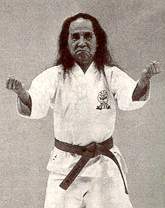 Gogen Yamaguchi (The Cat) was born Oshimi Yamaguchi on January 20th 1909, in the city of Agoshima on the southern end of Kyushu Japan. His father Tokutaro Yamaguchi was a merchant and later a school teacher and Superintendent, his mother Yoshimatsu was his fathers' assistant. Gogen Yamaguchi was also known in the world of Karate as 'the Cat'. Yamaguchi was a small man, just over five feet and a mere 160 pounds, however he projecte dthe impression of great bulk and solemnity and was first dubbed "the Cat" by American GI's for his gliding walk and flowing hair.
Gogen Yamaguchi (The Cat) was born Oshimi Yamaguchi on January 20th 1909, in the city of Agoshima on the southern end of Kyushu Japan. His father Tokutaro Yamaguchi was a merchant and later a school teacher and Superintendent, his mother Yoshimatsu was his fathers' assistant. Gogen Yamaguchi was also known in the world of Karate as 'the Cat'. Yamaguchi was a small man, just over five feet and a mere 160 pounds, however he projecte dthe impression of great bulk and solemnity and was first dubbed "the Cat" by American GI's for his gliding walk and flowing hair.
It was somewhere around 1930 or 1931 that Gogen and his then teacher and friend Jitsuei Yogi wrote to Miyagi and invited him to cometo Japan. This meeting proved to have a profound affect upon Yamaguchi's understanding of Karate. Previously he had only considered the hard aspect of Goju but after his meeting with Miyagi Sensei h ewas determined to train himself spiritually as well as physically. It was around this time that Gogen Yamaguchi began to study for a short time directly with Miyagi Sensei. Miyagi Sensei thoughth ighly of Yamaguchi who seemed to have mastered the hard aspect of Goju. In 1937 Miyagi gave Yamaguchi the nickname "Gogen", meaning "Rough". He then appointed Gogen Yamaguchi as his representative of Goju school in Japan.
During his long career Yamaguchi Sensei made many important contributions to Japanese Karate-do. Yamaguchi Sensei organized the system by adopting traditional Japanese administrative procedures. It wasYamaguchi who implementated the "kyu-dan" (white to black belt) ranking method by expanding on the system that was being used by Jigoro Kano Sensei in Judo and originated jiyu-kumite(free-sparring). He added to the Goju system the Taikyoku Kata forms, - additional training methods to prepare students for the more advanced katas. In 1935 Gogen Yamaguchi became head of Japanese Goju Ryu and established "The All Japan Goju Kai Association"in Kyoto, Japan.
In the late 1930's, after the system of Goju-Ryu had taken shape in Japan, Yamaguchi andhis senior students felt the need for a symbolic insignia and created what would become the legendaryof the clenched fist that is still used as the official emblemand uniform patch of many of different Goju Ryu schools today. He simply modeled it after the right hand of Chojun Miyagi's clenched fist, slightly crooked because of a previous injury.
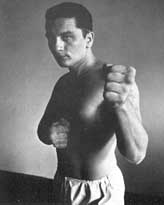 Peter Urban, who in 1953, as young sailor, was introduced to Karate in Yokohama, Japan. At the time Urban was already a student of Richard Kim and Mas Oyama,founder of the Kyokushin school. After several years of training with the two great masters Mr. Kim introducedUrban to Gogen Yamaguchi, Sensei in Tokyo, Japan, where he wa saccepted as a student at the Goju Kai.
Peter Urban, who in 1953, as young sailor, was introduced to Karate in Yokohama, Japan. At the time Urban was already a student of Richard Kim and Mas Oyama,founder of the Kyokushin school. After several years of training with the two great masters Mr. Kim introducedUrban to Gogen Yamaguchi, Sensei in Tokyo, Japan, where he wa saccepted as a student at the Goju Kai.
In 1957, Peter Urban taught karate to a small group of Americans in Tokyo, and competed in the All-Japan College Championships that same year.
In 1959 Urban returned to the U.S.and opened his first dojo in Union City, N.J and introduced Japanese Goju-Ryu to the public. It was his famous Chinatown Dojo on Canal Street in NYC in 1967 that made Japanese Goju Ryu Karate-Do available to the public. Sensei Urban believed that the Americans should have its own Karate style in much the same way that the Okinawans and Japanese have theirs.
In 1969 Peter Urban made a special visit to Japan to ask of Gogen Yamaguchi permission to establisha separate branch of Goju Ryu in the United States. Yamaguchi denied his request, saying the rules of Bushido stated that no white man could achieve Nirvana. Urban, dissatisfied with the decision retorted that these same rules stated that Japan could never lose a war. This statement offended the Sensei. Realizing this, Urban prepared to follow samurai custom, to cut off his pinky finger in apology. Yamaguchi's oldest son stopped him. However, the damage had been done.
Sensei Peter Urban resigned from the Japanese Goju Kai in late 1969 and upon his return established American Goju Karate in the United States. Later that same year Gosei Yamaguchi, the son of Gogen, set up base in San Fransisco, California and established the Goju-Kai Karate-Do U.S.A.. SenseiPeter Urban probably trained more top black belts than anyone on the East Coast; among them were: Chuck Merriman, Albert Gotay, William Louie, Frank Ruiz, Harry Rosenstein, Ralph Vicini, John Kuhl, Lou Angel, Thomas Boddie, Steve Malanoski, Joe Hess, Bill Liquori, Rick Pascetta, Susan Murdock, Owen Watson, and Ron Van Clief. Sensei Peter Urban is the "Grand Patriach of All-American Goju Karate" Systems! He is an American made Karate master, pioneer and author of the most popular book on the subject of Karate, "The Karate Dojo".
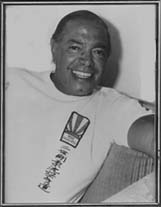 Frank Ruiz earned a chestful of medals including the Purple Heart, Silver Star,and Bronze Star during the Korean War. Upon his release, he became one of Peter Urban's first students in 1960. In 1969 Sensei Frank Ruiz and Sensei Harry Rosenstein, another student of Sensei Urban's, formed one of the most powerful schools of martial arts in the United State, Nisei Goju Ryu. Ruiz, a master level Judo and Karate instructor, tournament competitor, and a student of Sensei Peter Urban. In 1970 Ruiz cheated death after being struck by a car traveling 80 m.p.h., managing four years later to walk normally and practice Karate again.
Frank Ruiz earned a chestful of medals including the Purple Heart, Silver Star,and Bronze Star during the Korean War. Upon his release, he became one of Peter Urban's first students in 1960. In 1969 Sensei Frank Ruiz and Sensei Harry Rosenstein, another student of Sensei Urban's, formed one of the most powerful schools of martial arts in the United State, Nisei Goju Ryu. Ruiz, a master level Judo and Karate instructor, tournament competitor, and a student of Sensei Peter Urban. In 1970 Ruiz cheated death after being struck by a car traveling 80 m.p.h., managing four years later to walk normally and practice Karate again.
During the 1960s and 70s Frank Ruiz and Harry Rosenstein were able to assemble and train some of the best karateka in the United States. Some of them are Louis Delgado, Malachi Lee, Ronald M. Taganashi, Thomas "La Puppet" Carol, Chaka Zulu, Earl Monroe, HerbieThompson, Bill Wendell, Elsie Roman, Gaynor Cote, Wifredo Roldan, Owen Watson and Ron Van Clief "The Black Dragon".
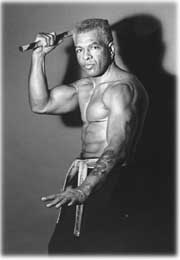 Ron Van Clief formed the Chinese Goju System in 1971. Mr. Van Clief has been studying and teaching Martial Arts for over 50 years. Van Clief has studied under Frank Ruiz, Leung Ting, Moses Powell and Sensei Peter Urban. Grandmaster Ron Van Clief is a 10th Degree Red Belt, and holds black belts or the equivalent in other styles as well. He has starred or appeared in more than forty motion pictures and documentaries as well as television series. He often found in colleges and universities as a guest speaker lecturing on the subject of martial arts. Van Clief is an author of several best selling books and has produced a series of martial arts training DVDs. He has been a stuntman, a police officer in New York, and is a former United States Marine.
Ron Van Clief formed the Chinese Goju System in 1971. Mr. Van Clief has been studying and teaching Martial Arts for over 50 years. Van Clief has studied under Frank Ruiz, Leung Ting, Moses Powell and Sensei Peter Urban. Grandmaster Ron Van Clief is a 10th Degree Red Belt, and holds black belts or the equivalent in other styles as well. He has starred or appeared in more than forty motion pictures and documentaries as well as television series. He often found in colleges and universities as a guest speaker lecturing on the subject of martial arts. Van Clief is an author of several best selling books and has produced a series of martial arts training DVDs. He has been a stuntman, a police officer in New York, and is a former United States Marine.
Chinese Goju International is a worldwide martial arts organization with schools and representatives in over 41 countries.
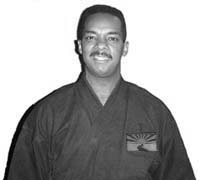 Goshin Ryu Bujutsu was established under the direction of Grandmaster Glenn Perry, 10th Degree Red Belt and a desciple of Shidoshi Ron Van Clief. The beginning of the Goshin Goju Ryu is really a story of a small group senior black belt working together with the common bond called martial arts. Goshin Ryu is under constant development through the combined efforts and dedication of the dojo leaders who makeup this organization.
Goshin Ryu Bujutsu was established under the direction of Grandmaster Glenn Perry, 10th Degree Red Belt and a desciple of Shidoshi Ron Van Clief. The beginning of the Goshin Goju Ryu is really a story of a small group senior black belt working together with the common bond called martial arts. Goshin Ryu is under constant development through the combined efforts and dedication of the dojo leaders who makeup this organization.
Although the style and organization were conceived in 1999 the system was not openly available to students in a class environment until September 2001. This developmental period allowed the senior grades to finalize the concepts and premise of this Ryu or school of martial arts.
This martial arts school opens it's doors to offer both, the wisdom and the knowledge necessary to survive in today's society, and together with the skills to combat violence, we also acquire the mental attitude that comes with it.
Goshin Ryu is a tribute to all who studied and trained in the past and those who continue to participate in the present.
|
|
This page was created by Glenn Perry, Goshin Ryu.